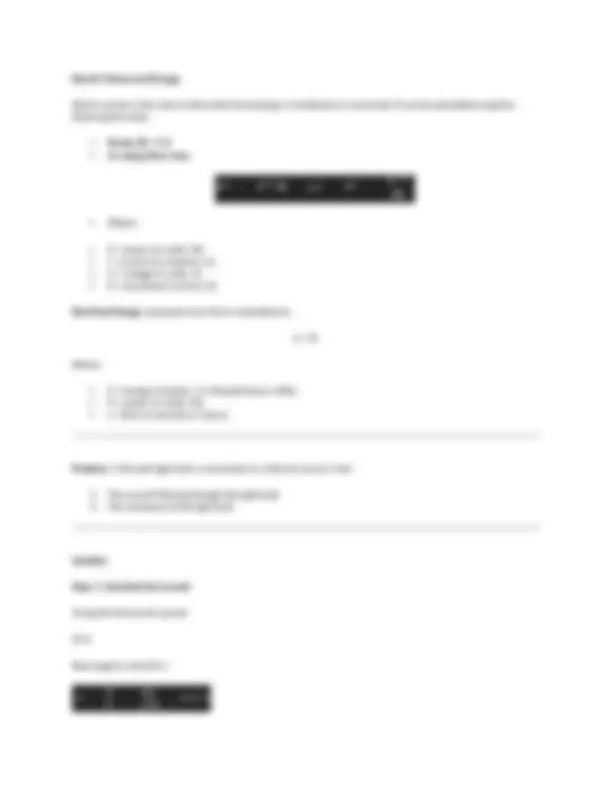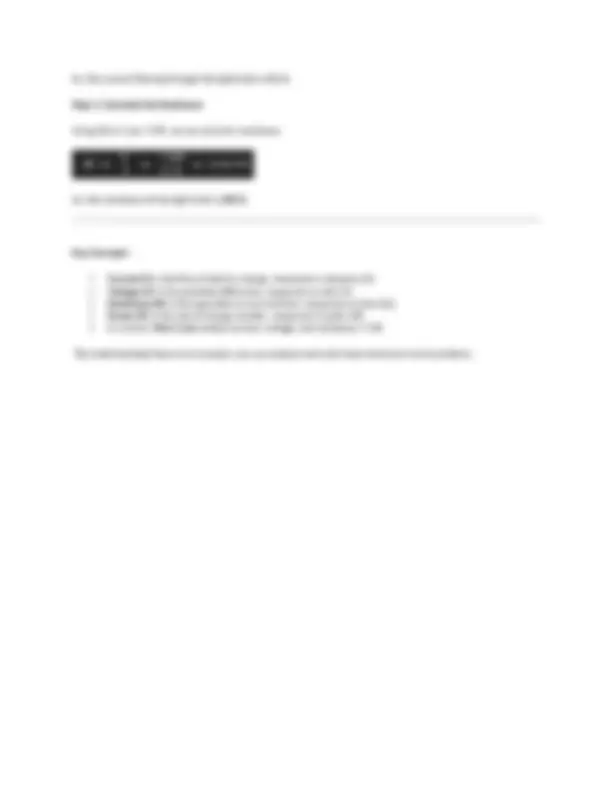




Study with the several resources on Docsity

Earn points by helping other students or get them with a premium plan


Prepare for your exams
Study with the several resources on Docsity

Earn points to download
Earn points by helping other students or get them with a premium plan
Community
Ask the community for help and clear up your study doubts
Discover the best universities in your country according to Docsity users
Free resources
Download our free guides on studying techniques, anxiety management strategies, and thesis advice from Docsity tutors
An introduction to the fundamental concepts of electricity, including electric charge, current, voltage, resistance, and power. It covers key topics such as ohm's law, series and parallel circuits, and the calculation of electrical energy and power. The document aims to equip readers with a solid understanding of the basic principles governing the flow of electric charge and the behavior of electrical circuits. It includes illustrative examples and problem-solving exercises to reinforce the concepts presented. This resource would be particularly useful for students studying introductory physics, electrical engineering, or related fields, as it lays the groundwork for more advanced topics in electricity and electronics.
Typology: Lecture notes
1 / 4

This page cannot be seen from the preview
Don't miss anything!



Electricity is the flow of electric charge , typically carried by moving electrons in a conductor such as a wire. It is a fundamental aspect of nature that provides power for devices, lights, and appliances. The study of electricity covers both static and dynamic forms of electrical charge.
Key Concepts in Electricity
o Where: I = current (in amperes, A)Q = electric charge (in coulombs, C)
I = current (in amperes, A)V = voltage (in volts, V)
Ohm’s Law One of the fundamental relationships in electricity is conductor between two points is directly proportional to the voltage across the two points and inversely Ohm’s Law , which states that the current through a proportional to the resistance of the conductor. V=IR Where: V is the voltage in volts (V),I is the current in amperes (A), R is the resistance in ohms (Ω). This law allows us to analyze simple circuits and calculate how much current will flow for a given voltage and resistance.
Circuits
So, the current flowing through the light bulb is 0.5 A. Step 2: Calculate the Resistance Using Ohm’s Law, V=IR , we can solve for resistance:
So, the resistance of the light bulb is 240 Ω.
Key Concepts: Current (I) is the flow of electric charge, measured in amperes (A). Voltage (V)Resistance (R) is the potential difference, measured in volts (V). is the opposition to current flow, measured in ohms (Ω). Power (P) In circuits, (^) is the rate of energy transfer, measured in watts (W). Ohm’s Law relates current, voltage, and resistance: V=IR.
*By understanding these core concepts, you can analyze and solve basic electrical circuit problems.